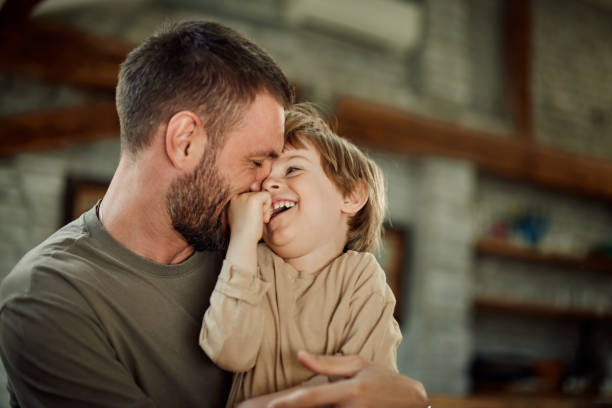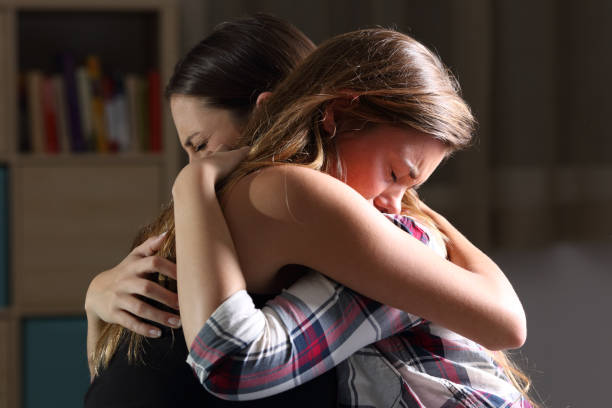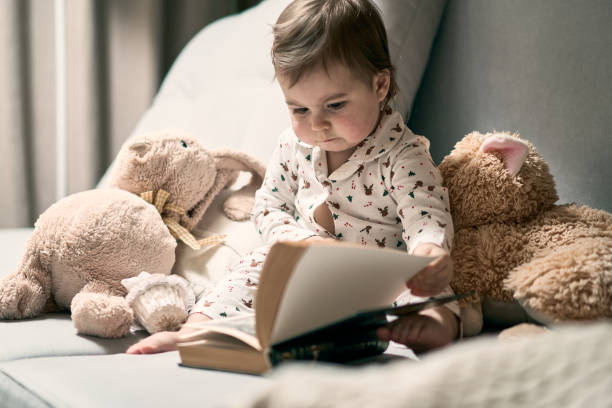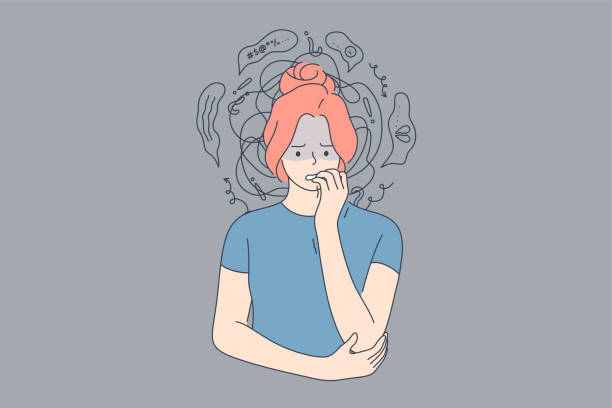How To Describe A Hugs In writing (11 Important Steps)
In the realm of storytelling, it is often said that words have the power to transport readers to far-off lands, ignite the fires of imagination, and stir the deepest chambers of the heart.
At the heart of this transformative alchemy lies the art of description, and within it, an element often taken for granted—the embrace, the hug.
How to describe a hug in writing is a subtle, yet immensely powerful endeavor. It’s the brushstroke that paints the canvas of human connection, the prose that breathes life into relationships, and the bridge that links characters to the emotions that stir within readers.
From the brief, casual touch of old friends to the passionate, earth-shattering embrace of lovers, the hug is a conduit of emotions and narratives that deserve our careful exploration.
In this guide, we will delve into the intricacies of describing hugs, dissecting not just the physical details but also the emotional resonance, and offering insights and techniques to capture this universal act of connection in a way that leaves a lasting mark on the minds and hearts of your readers.
How To Describe A Hugs In writing
Describing a hug in writing involves capturing the physical and emotional aspects of this intimate gesture. Here’s a step-by-step process to help you describe a hug effectively:
Set the Scene
Start by establishing the setting and the relationship between the characters involved in the hug. Consider the location, time of day, and any relevant background information that will help set the mood.
Identify the Characters
Introduce the characters who are about to hug. Provide brief descriptions of their appearances and personalities. This will help readers connect with them and understand the significance of the hug.
Describe Body Language
Detail the characters’ body language before the hug. Mention their facial expressions, posture, and any gestures that convey their emotions or anticipation.
Express Emotions
Describe the emotions each character is experiencing as they approach the hug. Are they excited, relieved, sad, or hesitant? Use sensory language to convey these feelings. For example, “Her heart raced with anticipation as she reached out to him.”
The Hug Itself
Describe the physical act of the hug. Include details like the strength of the embrace, how tightly they hold each other, and any special nuances such as a gentle pat on the back or a whispered sentiment. Use vivid language to make the hug come to life for the reader.
Sensory Details
Incorporate sensory details to enhance the description. Mention the feel of the characters’ bodies pressed together, the warmth of their breath, and any scents that might be present, such as the scent of their perfume or cologne.
Length and Intensity
Consider the duration and intensity of the hug. Is it a brief, friendly hug, or a long, passionate embrace? Reflect the nature of the relationship and the emotions involved.
Dialogue
Include any dialogue that occurs during or immediately after the hug. This can reveal more about the characters’ feelings or thoughts in that moment.
Aftermath
Conclude by describing the aftermath of the hug. How do the characters feel afterward? Has the hug changed the dynamics of their relationship, or has it provided closure?
Reflect on the Impact
Reflect on the significance of the hug within the context of the story. What does it symbolize, and how does it contribute to character development or the plot?
Revise and Edit
Finally, review your description for clarity, conciseness, and impact. Ensure that it flows smoothly and engages the reader emotionally.
By following these steps, you can create a compelling and evocative description of a hug in your writing, allowing your readers to connect with the characters and feel the emotions of the moment.

Understanding the Hug
Understanding the hug is like decoding the secret language of the heart, where bodies become words and emotions are penned through the warmth of an embrace.
It’s not just a simple physical gesture but a window into the vast spectrum of human connections. Whether it’s the comforting cocoon of a friend’s arms, the electric charge of a lover’s touch, or the silent reassurance of a parent’s hug, each tells a story waiting to be uncovered.
As writers, we are not just narrators, but anthropologists of emotion, delving into the nuances of each embrace to uncover the tales of love, comfort, and vulnerability etched in every heartbeat and held breath.
Types of hugs
Types of hugs are the diverse expressions of human connection, each with its own language and emotion. The friendly hug is a warm greeting, a simple yet powerful gesture that conveys affection and camaraderie.
It’s a social lubricant, breaking the ice between acquaintances and reinforcing bonds between friends. The romantic hug, on the other hand, is an intimate ballet of two souls, where bodies intertwine in a passionate dance, speaking of desire and love.
It’s the unspoken declaration of affection, a silent sonnet written in the language of touch. Finally, the comforting hug is a sanctuary in itself, a safe harbor in times of sorrow or distress.
It offers solace and reassurance, whispering that you are not alone in your struggle. In these different types of hugs, the intricacies of human relationships are woven, creating a tapestry of emotions that writers can explore and interpret.
Preparations for Description
Preparations for description are the sculptor’s chisel and the artist’s palette in the canvas of storytelling. Before we delve into the intricate world of words, we must first shape the characters who will breathe life into our narratives.
Just as a jeweler selects the finest gems, we must carefully craft the hugger and the huggee, chiseling away their flaws and illuminating their virtues.
The backstory becomes our historical archive, a treasure trove of emotional relics that guide us in portraying the depth of their relationship.
Like a conductor fine-tuning an orchestra, we harmonize their histories and emotions, ensuring that when the moment of the hug arrives, it resonates with authenticity.
In the world of storytelling, preparations for description are the alchemy that transforms words into feelings and sentences into memories.
Character development
Character development is the transformative heartbeat of storytelling, where two-dimensional names on a page evolve into vibrant, relatable individuals.
It’s the art of breathing life into the fictitious, a journey of self-discovery that takes readers through the trials and triumphs of these literary companions.
Just as a blacksmith forges a blade through fire and steel, character development forges identities through experiences and choices.
We watch them bloom, falter, and rise again as they grapple with their flaws and strengths, making them not just figments of imagination, but mirrors reflecting the complexities of human existence.
In the symphony of storytelling, character development is the melody that resonates in the hearts and minds of the audience, inviting them to embark on an emotional odyssey where they, too, may find pieces of themselves within the tapestry of these fictional lives.
Utilizing the Five Senses
Utilizing the five senses in writing is akin to wielding the keys to an alternate universe, one where the reader doesn’t merely observe but becomes an active participant in the narrative.
With a stroke of the author’s pen, they can feel the cool breeze on their skin, taste the bittersweet memories, hear the symphony of emotions, smell the intoxicating fragrances, and see the world through the eyes of characters who leap off the page.
This multisensory journey transcends the boundaries of imagination, wrapping its readers in a sensory cocoon that lingers long after the last page is turned.
It’s the masterstroke that turns storytelling into an immersive experience, where the written word is not just read but lived, making the mundane magical and the extraordinary tangible.
Visual imagery
Visual imagery in literature is the artist’s brushstroke on the canvas of the reader’s mind. It transforms words into vivid landscapes, characters, and emotions, igniting a cinematic experience within the imagination.
With carefully chosen details and vivid descriptions, writers can conjure worlds so real, readers can almost smell the flowers in a sun-drenched meadow, feel the gritty sand beneath their toes, or see the glint of a tear in a lover’s eye.
Visual imagery is the alchemy that bridges the gap between the written word and the reader’s senses, inviting them to step into the story and paint their own mental masterpiece, making each book an individual, unforgettable journey.
Emotional and Psychological Impact
The emotional and psychological impact in storytelling is like the rumble beneath the calm surface of a vast ocean, where words become emotional tempests, and characters are vessels navigating the turbulent waters of human experience.
It’s the symphony of emotions, where the crescendo of joy can lead to the depths of despair in a heartbeat. As writers, we are not just architects of tales but conductors of feelings, orchestrating the highs and lows, the fears and hopes that resonate within our readers’ hearts and minds.
In this intricate dance of words, we explore the labyrinthine complexities of the human psyche, weaving threads of empathy that connect the fictional with the personal.
The emotional and psychological impact of storytelling is the invisible hand that reaches out from the pages, gripping the reader’s soul, and never letting go, for it is in these moments that stories cease to be mere narratives and instead, become profound and unforgettable journeys through the human experience.

Conveying emotions through body language
Conveying emotions through body language is the silent poetry of storytelling, a dance of unspoken words that speaks volumes.
It’s the arch of an eyebrow, the quiver of a lip, the clenching of fists, or the gentle brush of a hand—a secret code etched upon the canvas of a character’s physicality.
The tilt of a head, the slump of shoulders, or the trembling of knees can reveal more about their emotional state than a thousand words.
It’s in these nuanced gestures that the richness of human sentiment is unveiled, from the subtle nuances of attraction to the raw power of rage.
Writers wield the power to sculpt these emotional landscapes, crafting characters whose bodies become instruments of expression, allowing readers to peer into their souls, transcending language to connect on a visceral level.
Metaphors and Symbolism
Metaphors and symbolism are the literary constellations in the boundless universe of words, where abstract concepts twinkle and come alive as tangible, vibrant entities.
They are the hidden keys that unlock secret chambers of meaning, whispering profound truths in the ears of attentive readers.
A metaphor is a prism through which light refracts into intricate patterns of thought, while symbolism is the language of dreams, where everyday objects become vessels for the extraordinary.
Just as a single rose can encapsulate the entirety of love’s beauty, a looming shadow can embody the darkness of fear or mystery.
These literary devices are the poetic arsenal of writers, transforming the mundane into the sublime, making prose sing and stories dance, and, in their eloquent subtlety, unveiling profound truths about the human condition, leaving readers enchanted and forever altered.
Nature-based metaphors
Nature-based metaphors in literature are the whispers of the wilderness, the secrets of the seasons, and the echoes of the Earth itself that breathe life into words.
They take us on a journey through the natural world, where the fierce tempests of emotion mirror the raging storms at sea, the passage of time is reflected in the changing leaves of autumn, and the rebirth of love blooms like a fragrant spring blossom.
These metaphors draw upon the beauty and power of the natural realm to illuminate the human experience, reminding us that we are inextricably connected to the Earth.
From the thunderous roar of a waterfall to the gentle caress of a breeze, nature-based metaphors infuse literature with a timeless and universal resonance, inviting readers to embark on a poetic voyage where the language of the Earth converges with the language of the heart.
Dialogue and Subtext
Dialogue and subtext in writing are the covert exchanges in the literary underworld, where words carry concealed meanings, and characters navigate the labyrinth of unspoken truths.
It’s the art of conversation beneath the conversation, where every uttered phrase is a mask, hiding the submerged intentions and emotions lurking in the shadows.
Writers become code-breakers, deciphering the cryptic language of human interaction, where the unspoken words echo louder than those actually spoken.
Just as an actor’s expression can betray the character’s true feelings, the subtext in dialogue reveals the tangled web of human relationships and motivations.
In this clandestine world of narratives, readers become detectives, unravelling the layers of subtext, peeling back the veneer of words to uncover the real story beneath.
Dialogue and subtext transform writing into a compelling, dual narrative, where the text provides the surface story, while the subtext fuels the simmering undercurrent of emotion, offering readers an intellectually engaging and emotionally resonant experience.
Verbal exchanges before, during, and after the hug
Verbal exchanges before, during, and after the hug are the threads of communication that weave a rich tapestry of emotion in storytelling.
The words exchanged before the embrace set the stage, like a delicate overture, hinting at the emotional crescendo to come.
During the hug, as bodies connect and emotions swirl, words may become momentarily irrelevant, replaced by the unspoken language of touch.
Yet, it’s in these silent seconds that volumes can be said. After the hug, as characters pull away, the spoken words carry the emotional residue of the embrace.
They can be a postscript, sealing the moment’s significance, or they may echo with subtext, revealing hidden desires or unresolved conflicts.
These verbal exchanges are the symphony of storytelling, where the melody of dialogue dances with the rhythm of physical connection, orchestrating a narrative that resonates long after the final word is read.

Length and Intensity
Length and intensity in storytelling are the dynamic twins that breathe life into moments of connection, whether a fleeting touch or a passionate, lingering embrace.
Just as a single brushstroke can change the entire canvas, the duration and intensity of a moment can profoundly alter the emotional landscape of a story.
A brief, electric touch may spark a wildfire of desire, while a protracted hug can be an epic journey of vulnerability and healing.
Writers are the conductors of these emotional crescendos, orchestrating the intensity and duration of these moments to elicit the perfect emotional symphony for their readers.
Whether it’s a short, explosive burst of passion or a slow, smoldering burn, the interplay of length and intensity transforms writing into an artful exploration of human connection and longing, making every page a sensory and emotional adventure.
Describing a brief, casual hug
Describing a brief, casual hug is akin to capturing a fleeting moment of connection, like a snapshot in time. It’s a subtle gesture, where bodies gently brush against each other, and arms encircle briefly, offering a reassuring pat on the back or a quick squeeze.
The embrace is more of a whisper than a declaration, a nod of recognition or a sign of camaraderie. It’s like a wink in the language of touch, a subtle acknowledgment that says, “I’m here, and I care.”
In writing, describing such a hug requires delicate strokes, focusing on the brevity, the gentle pressure, and the warm, familiar feeling. It’s a reminder that even in the smallest gestures, there’s a world of connection waiting to be explored.
The Hug’s Aftermath
The Hug’s Aftermath is the emotional resonance that lingers like an echo in the chambers of the heart, long after the physical embrace has dissolved.
It’s the moment where the real magic happens, where the hug’s power continues to unfurl, like a butterfly emerging from its chrysalis.
After the arms have untangled, the characters stand at a crossroads, forever changed by the intimate encounter.
Emotions ripple through the narrative like a pebble dropped into a still pond, affecting not just the characters but the plot itself.
The Hug’s Aftermath offers an exquisite opportunity for reflection and character development, where secrets may be revealed, relationships can shift, and the story’s course may alter in profound and unforeseen ways.
In these pivotal moments, writers have the chance to delve deeper into the human psyche, exploring the intricate facets of emotion, and crafting narratives that resonate with lasting impact.
Emotional resonance
Emotional resonance in storytelling is the harmonious chord that reverberates deep within the reader’s soul. It’s the indelible imprint left by words, a visceral connection that transcends the page.
It’s the art of touching not just the mind but the heart, creating an experience that lingers long after the story ends.
When a narrative possesses emotional resonance, it has the power to awaken dormant feelings, trigger introspection, or evoke empathy for characters living within the pages.
Writers are the architects of this emotional symphony, carefully crafting scenes, dialogues, and characters that resonate with the universal rhythms of human experience.
It’s in these moments of resonance that storytelling transcends its role as entertainment and becomes a profound mirror reflecting the complexities of the human condition, leaving readers forever altered by the emotional journey they’ve undertaken.

Examples and Case Studies
Examples and case studies are the vibrant canvases and detailed blueprints of storytelling, where the theoretical becomes tangible and the abstract is given life.
They are the treasures buried in the narrative landscape, waiting to be unearthed, examined, and cherished. In the world of storytelling, they offer readers a chance to learn not just through words, but through immersive experiences.
Like an archaeologist unearthing relics of forgotten civilizations, we, as writers, can unearth the pearls of wisdom and emotional depth hidden within these real-world or fictional scenarios.
They serve as our guiding stars, showcasing the craft at its best and inspiring us to explore new horizons in our own work.
Examples and case studies in writing are not just educational tools but the keys to unlock the infinite doors of imagination, enabling us to create stories that resonate, captivate, and endure in the hearts and minds of our readers.
Analysis of well-known literary hugs
Analysis of well-known literary hugs is like a journey through the archives of human emotion, where iconic embraces become the benchmarks against which all other hugs are measured.
These moments, etched in the annals of literature, offer a profound insight into the power of the written word to convey the nuances of love, longing, or loss.
From the passionate reunion of Elizabeth and Mr. Darcy in Pride and Prejudice to the poignant embrace between Harry Potter and his lost loved ones in the Forbidden Forest, each hug carries a unique emotional resonance.
They are not just textual descriptions but windows into the hearts of the characters and the minds of the authors, inviting readers to delve into the depths of human connection.
Analyzing these literary hugs unveils the delicate craft of storytelling, where the nuances of body language, dialogue, and atmosphere converge to create moments that leave an indelible mark on the literary landscape.
Exercises and Writing Prompts
Exercises and writing prompts are the uncharted territories in the writer’s map, where the blank page becomes a canvas for imagination and creativity to roam free.
They are the keys that unlock the door to the hidden chambers of storytelling potential, offering both novice and seasoned authors an opportunity to sharpen their skills, unearth hidden gems of inspiration, and overcome creative hurdles.
Like the artist’s sketchbook or the musician’s warm-up scales, these exercises are the crucibles where raw ideas are refined, plots are tested, and characters are sculpted.
Writing prompts, on the other hand, are like sparks in the dark, igniting the fires of narrative invention. They challenge us to explore uncharted genres, delve into unexamined emotions, and traverse unimagined worlds.
They are the launchpads that propel our stories into orbit, pushing the boundaries of our own creativity. In the realm of writing, exercises and prompts are not just tools; they are the catalysts for literary alchemy, transforming words into worlds and ideas into unforgettable narratives.
Practical exercises for describing hugs
Practical exercises for describing hugs are the training grounds where writers hone their ability to capture the profound in the seemingly mundane.
These exercises encourage us to delve deep into the art of tactile storytelling, challenging us to meticulously observe and articulate the subtleties of physical connection.
From analyzing the variations in pressure to dissecting the emotions concealed within each embrace, these exercises are the workshop where writers fine-tune their sensory acuity and enrich their descriptive palette.
They invite us to immerse ourselves in the embrace, to feel the heartbeat of the characters, and to unravel the intricate tapestry of emotions woven into each hug.
By practicing these exercises, we not only refine our craft but also deepen our understanding of the human experience, enabling us to convey the profound power of touch and connection with greater authenticity and resonance in our narratives.
Editing and Refinement
Editing and refinement in the writing process are akin to the sculptor’s chisel and the jeweler’s polishing wheel, the crucible where raw creativity transforms into a polished gem.
It’s where words undergo a metamorphosis, shedding excess weight to reveal their true brilliance. Much like a chef refining a culinary masterpiece, writers reevaluate each sentence, each word, to ensure they contribute to the symphony of their narrative.
Editing is where the story sharpens its claws and tightens its grip on the reader’s imagination, and refinement is where the rough edges of ideas become the smooth contours of storytelling excellence.
In this alchemical workshop, writers become not just creators but also artisans, chiseling and shaping their prose until it gleams with the luster of their vision.
Editing and refinement are the crucible where stories are transformed from mere drafts into literary treasures, capturing the essence of their creator’s intent and delivering it, sparkling and unforgettable, to their readers.
Tips for revising hug descriptions
Revising hug descriptions is a delicate art that can elevate a moment of connection from ordinary to extraordinary.
As writers, we must approach this revision process with the discerning eye of a sculptor and the empathy of a therapist.
Begin by scrutinizing each element, considering whether the sensory details resonate with the desired emotions.
Trim any excess words, ensuring that the description remains concise yet evocative. Delve into the characters’ internal experiences; are their emotions, thoughts, and motivations clearly reflected in the hug?
Consider the pacing of the description in relation to the overall narrative flow; does it contribute to the story’s rhythm and tension?
Lastly, assess the use of metaphors or symbolism; do they add depth and meaning or obfuscate the scene? Revising hug descriptions is like refining a musical composition—each note and nuance must harmonize to create a symphony of emotions that captivates and lingers in the reader’s heart.
Frequently Asked Questions about how to describe a hug in writing:
What’s the secret to making a hug description stand out in a story?
The key is to infuse your description with emotion. Capture the characters’ feelings, make it sensory-rich, and ensure it serves a purpose in your narrative.
Can I use metaphors and similes to describe a hug effectively?
Absolutely! Metaphors and similes can add depth to your description. For example, “Their hug was like a lifeline, pulling her from the sea of despair.”
How do I describe a platonic hug versus a romantic one?
To distinguish between the two, focus on the characters’ emotions, the duration, and any unique gestures or body language. A platonic hug might be friendly and brief, while a romantic one could be more passionate and linger longer.
Are there any cultural considerations when describing a hug in writing?
Yes, be mindful of cultural differences in hugging customs. Research how hugging is perceived in different cultures to ensure your description is accurate and respectful.
What’s the role of symbolism in describing a hug?
Symbolism can add depth to your hug description. A hug can symbolize reconciliation, support, or the mending of a relationship. Use it to convey a deeper layer of meaning.
How do I ensure my hug description is relatable to readers?
Make the emotions and experiences of the characters relatable by tapping into universal human emotions. Readers should be able to connect with the characters’ feelings and experiences.
Can I describe a hug without using emotional language?
While it’s possible, it’s usually more effective to convey emotions through words and phrases that evoke feelings. Emotional language helps readers connect with the characters on a deeper level.
What are some creative ways to describe the aftermath of a hug in writing?
You can describe the aftermath by showing how the hug affects the characters’ thoughts and actions. For example, you could depict a character with newfound confidence or a renewed sense of purpose after a hug.
How can I make a hug description serve a plot point in my story?
Ensure the hug is not just a standalone moment but contributes to the overall plot. It can lead to a revelation, a change in the characters’ dynamics, or set the stage for future events.
Is it essential to describe every hug in detail in a story?
No, not every hug needs a detailed description. Selectively choose moments where the hug has narrative significance, and focus your description on those key instances to keep your story engaging.
These uniquely crafted FAQs address various aspects of describing hugs in writing, helping writers consider the emotional, cultural, and narrative elements that come into play when incorporating hugs into their stories.
Conclusion
In conclusion, describing a hug in writing is a delicate and powerful art that can add depth and emotion to your narrative.
Through careful attention to the characters’ emotions, body language, and sensory details, you can create a vivid and relatable depiction of this intimate gesture.
Whether it’s a platonic hug between friends, a passionate embrace between lovers, or a hug symbolizing reconciliation, the ability to convey the subtleties and significance of a hug can enhance your storytelling.
It’s important to remember that a well-described hug is not merely a physical action but a window into the characters’ inner worlds.
It can reveal their fears, desires, and the evolution of their relationships. The description of a hug can serve as a pivotal moment in your story, offering opportunities for character development and advancing the plot.
Ultimately, the art of describing a hug in writing is about making your readers feel the emotions, creating a connection, and providing a lasting impression.
By following the steps and considering the unique aspects mentioned in the FAQs, you can craft powerful and evocative hug descriptions that resonate with your audience, adding an emotional dimension to your storytelling.






